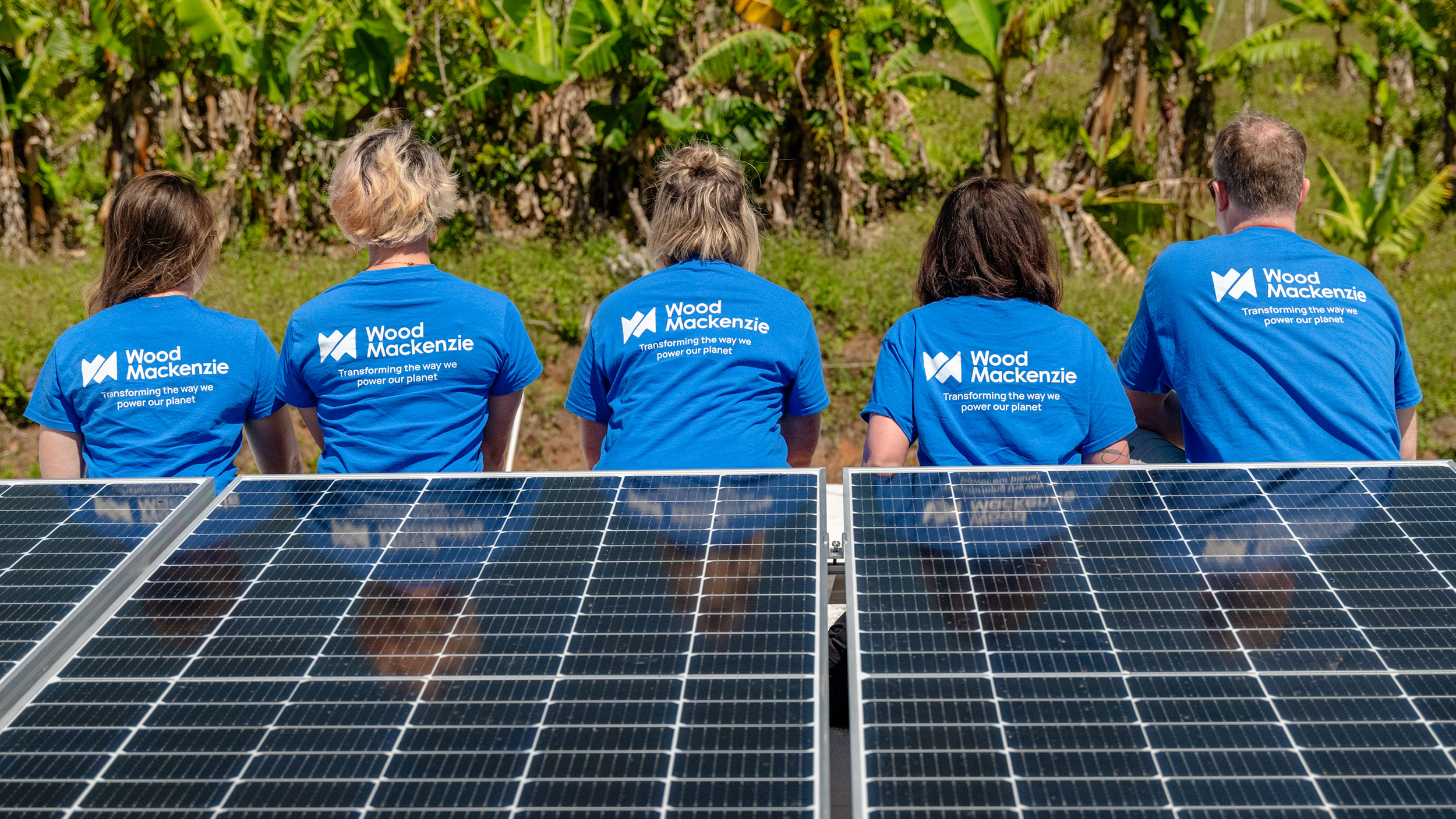Our top takeaways from the World Hydrogen Summit
Regulatory uncertainty, infrastructure challenges and demand complexities shape the evolving hydrogen landscape
1 minute read
Bridget van Dorsten
Principal Analyst, Hydrogen

Bridget van Dorsten
Principal Analyst, Hydrogen
Bridget is a hydrogen-focused principal analyst on our Energy Transition Practice.
Latest articles by Bridget
-
Opinion
Our top takeaways from the World Hydrogen Summit
-
Opinion
eBook | The hydrogen opportunity from now to 2050: what utilities and developers need to know
-
Opinion
eBook | The hydrogen opportunity from now to 2050: what industrial players need to know
-
Opinion
eBook | Investing in hydrogen from now to 2050: what you need to know
-
Opinion
European power in 2025: the pace, opportunities and challenges of the transition
-
Featured
Hydrogen 2025 outlook
Murray Douglas
Vice President, Hydrogen & Derivatives Research

Murray Douglas
Vice President, Hydrogen & Derivatives Research
Murray is responsible for Wood Mackenzie’s global coverage across the hydrogen value chain.
Latest articles by Murray
-
Opinion
Hydrogen: the outlook to 2050
-
Opinion
Our top takeaways from the World Hydrogen Summit
-
Opinion
eBook | The hydrogen opportunity from now to 2050: what utilities and developers need to know
-
Opinion
eBook | The hydrogen opportunity from now to 2050: what industrial players need to know
-
Opinion
eBook | Investing in hydrogen from now to 2050: what you need to know
-
Opinion
What lies ahead for hydrogen and low-carbon ammonia?
Ammar Al Balushi
Research Associate, Hydrogen and Derivatives

Ammar Al Balushi
Research Associate, Hydrogen and Derivatives
Latest articles by Ammar
-
Opinion
Our top takeaways from the World Hydrogen Summit
-
Opinion
Hydrogen conference 2024: our biggest takeaways
-
Opinion
ADNOC doubles net hydrogen production through stake in ExxonMobil’s Baytown project
Monica Trilho
Research Analyst – Hydrogen & Derivatives

Monica Trilho
Research Analyst – Hydrogen & Derivatives
Mónica is a hydrogen-focused research analyst for the Power & Renewables department.
Latest articles by Monica
-
Opinion
Hydrogen: the outlook to 2050
-
Opinion
Our top takeaways from the World Hydrogen Summit
-
Opinion
Hydrogen conference 2024: our biggest takeaways
-
Opinion
Our key takeaways from the Lisbon Energy Summit 2024
-
Opinion
Hydrogen costs in 2024: what you need to know
-
Opinion
Insights from the World Hydrogen Summit 2024
The World Hydrogen Summit, a key event for the global hydrogen industry, highlighted several critical trends and challenges facing the sector. As the hydrogen economy continues to develop, stakeholders grapple with regulatory uncertainties, infrastructure bottlenecks, and the complexities of securing long-term demand.
Fill out the form at the top of the page to download a complimentary insight outlining all five of our top takeaways from the World Hydrogen Summit, or read on for a sample of just two of our takeaways:
1. Sizing the market: regulatory clarity needed
The implementation of RED III targets remains uncertain, with industry players calling for clearer regulatory frameworks. This is particularly crucial for blue hydrogen and ammonia projects, which face an evolving policy landscape. There's a potential risk of oversupply in the ammonia market if energy sector demand doesn't grow rapidly enough to absorb increasing production.
A representative from Galp noted that while they're using RED III targets as a guideline, they're awaiting Portugal's transposition of the regulations into national law. The company believes their green hydrogen costs (€8-13/kg) could be competitive against potential penalties, highlighting the strategic considerations at play.
2. Offtake and demand complexities persist
Securing creditworthy offtakers for long-term contracts remains a significant hurdle for project developers. While many off-take agreements exist, they are often not publicly disclosed, creating a perception of limited demand. The aviation and marine sectors show potential, but are only expected to support substantial growth beyond the mid-2030s.
BP representatives noted that hydrogen in mobility will likely start slowly from 2030, potentially accelerating by 2035. They stressed that supply chain constraints and lack of demand are major barriers, with a potential market enabler being an announcement from a truck OEM to start large-scale production.
Read the rest of our top takeaways
Fill out the form at the top of the page to download our full list of key takeaways from the event.
Plus, sign up to Wood Mackenzie’s upcoming Hydrogen Conference (taking place 12th-13th November 2025) for more expert insights into the hydrogen landscape.









